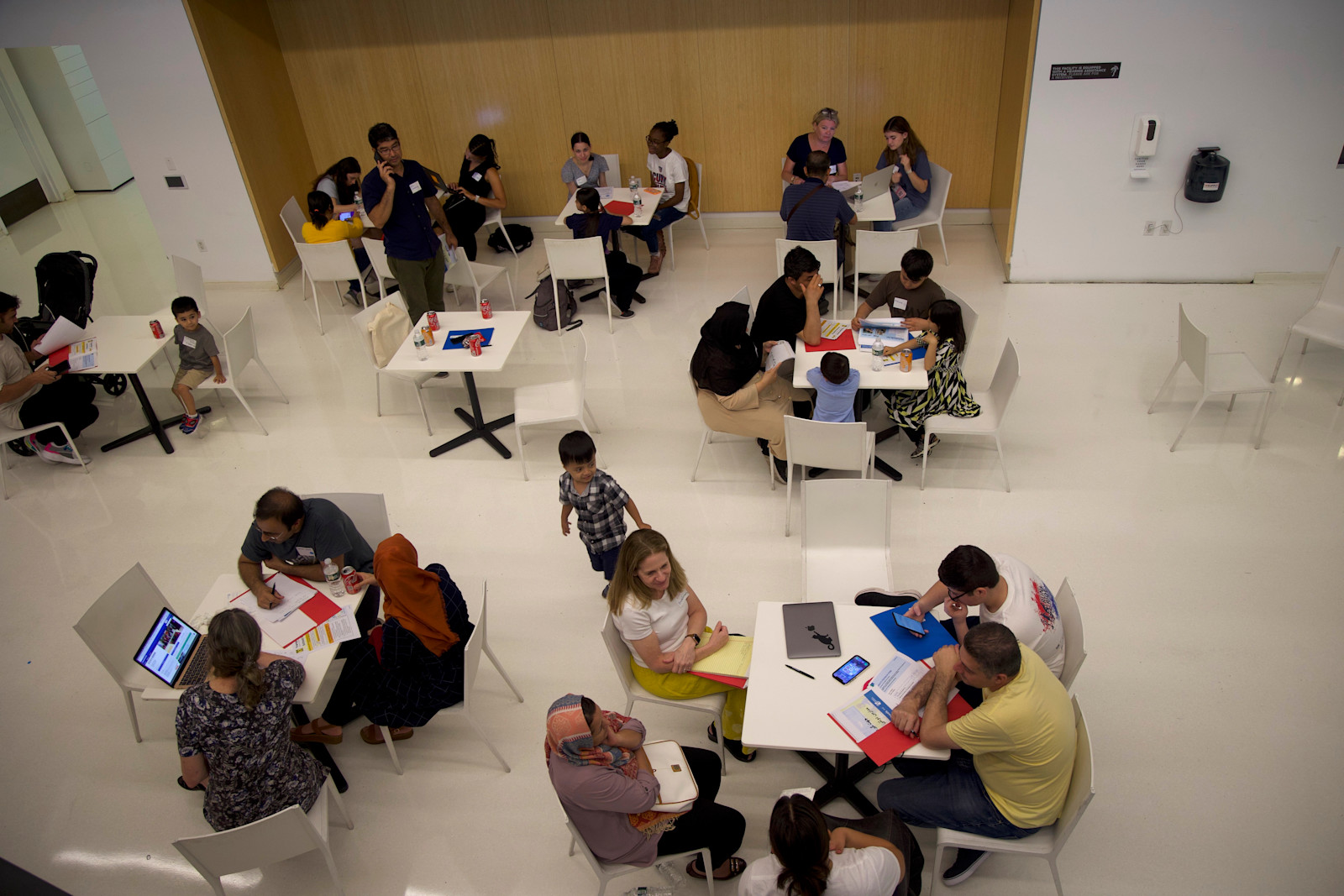InsideSchools Hosts New Immigrant Workshop

On a recent hot summer day, July 27th, InsideSchools hosted its first workshop for asylum-seeking immigrants. Our group included several InsideSchools staff, and parent and student volunteers.
On a table in an atrium at the New School University Center, we spread out our sign-in sheet, name tags, and colorful markers. Soon the space filled with men and women, babies and toddlers and teens, mostly from Afghanistan.
We invited them to fill out name tags. A little girl with pigtails slowly wrote M-E-H-I- with a purple marker but paused and crossed out the “I”—something wasn’t right.
“Sorry,” she said, wrinkling up her nose in confusion.
I slid a new name tag across the table so she could try again. This time she got it, proudly writing “Mehria.”
“Thank you very much!” she said, her smile stretching from pigtail to pigtail.
According to the New York Times, the city has welcomed more than 67,000 migrants since last spring. An estimated 18,000 asylum-seeking immigrant students have enrolled in New York City public schools.
The 50 or so new immigrants who attended our workshop came from hotels that serve as shelters in Manhattan, Brooklyn and Queens. Accompanying the families were staffers from Project Rousseau, a non-profit that works with underserved youth, including recent arrivals.
These families were laser-focused on education.
“What’s your favorite thing about New York?” I asked a 9-year-old girl.
“That I can go to school,” she said, nodding for emphasis.
After leading an orientation to NYC public schools in English (interpreted into Dari by a parent), we met individually with families to answer questions about their children’s education. The Dari translator was out sick. Google Translate was our friend. Afghan parents and children who could speak English helped the others.
I met with a father who wanted his two children to attend the same school so he could drop them off more easily. The Family Welcome Center gave him two separate schools far from the shelter and from each other; one child was elementary school age, the other middle. To be together, I explained, the children would need to attend a K-8 school that had space in their appropriate grade levels. I showed him how to find these schools and advised him to make a list of possibilities. Family Welcome Centers help families with enrollment year round but they are struggling to meet the needs of newcomers.
I spoke with another father whose 17-year-old daughter had gaps in her education. She had been placed in Pathways to Graduation (P2G), which prepares older students to take an exam to earn their high school diploma. She was learning but she yearned for the whole high school experience—sports, music, lockers, lots of classmates.
Her father wanted to know: “Could she go to a regular school?”
Newcomer students have the right to a free, accessible and appropriate public education regardless of immigration status or home language. Like for all students, the right fit can make a big difference. One possibility for the 17-year-old would be one of the city’s five ELL Transfer Schools ("ELL" stands for English language learner). These are small, supportive high schools that serve older students who are learning English.
After lunch I sat with a family whose young child had a rare blood condition unfamiliar to me. The child needs blood transfusions once a month—eventually, a bone marrow transplant.
It was hard not to be overwhelmed by the challenges these families faced.
In the days leading up to our workshop we brushed up on acronyms and special services related to English language learners, over-age and under credited students, and newcomers: English language transfer schools, international schools, P2G, Young Adult Borough Centers, English as a new language and transitional bilingual services.
The experience tested the limits of our knowledge, but we are excited to learn more. What we do learn along the way will benefit all families who need help navigating the city’s public schools. We are refining our materials and will be better prepared to support all NYC families with questions about the school system.
Will you lend a hand?
We have received multiple requests for workshops and almost every parent who attends wants to meet with us. We need donations to continue to host these events for newcomers and to develop guides and materials for all, in multiple languages. No amount is too small. If many of you give $10 or $15 it will soon add up.
We also need volunteers who know NYC schools. Email us at contact@insideschools.org and write "Volunteer" in the subject line. Briefly let us know how you can help.
It is a challenge and an honor to share knowledge about this city’s complex public school system with newcomers who are eager, eager, to join in.
Please Post Comments